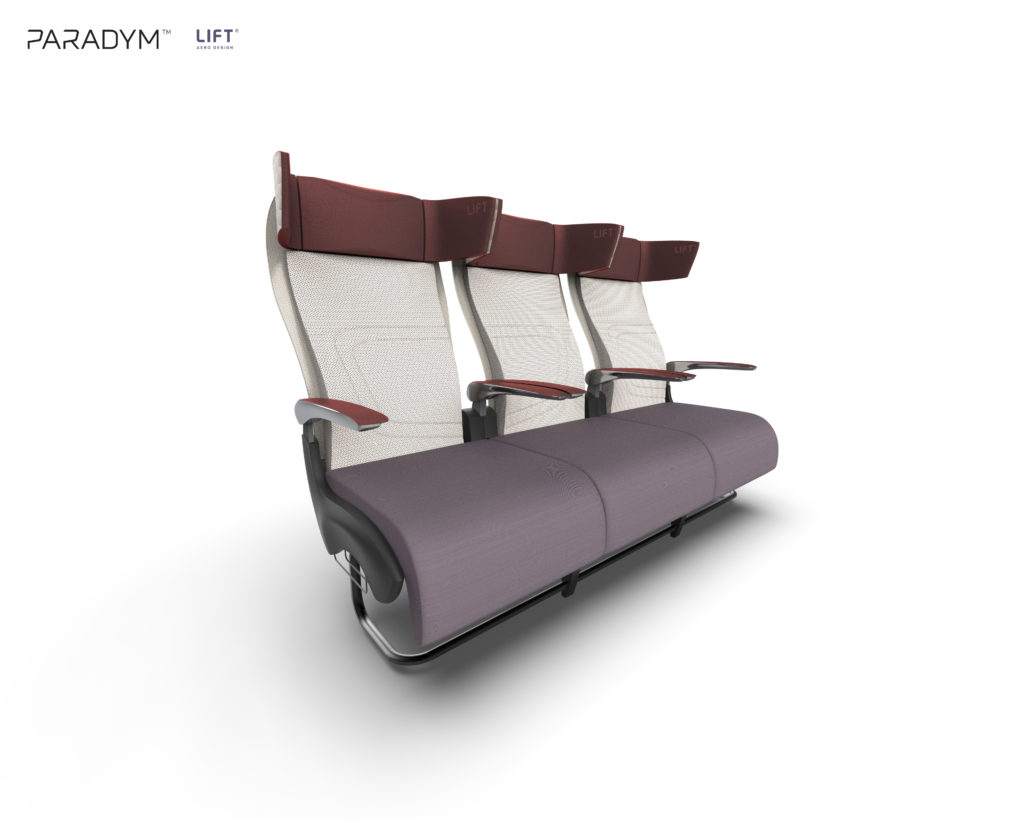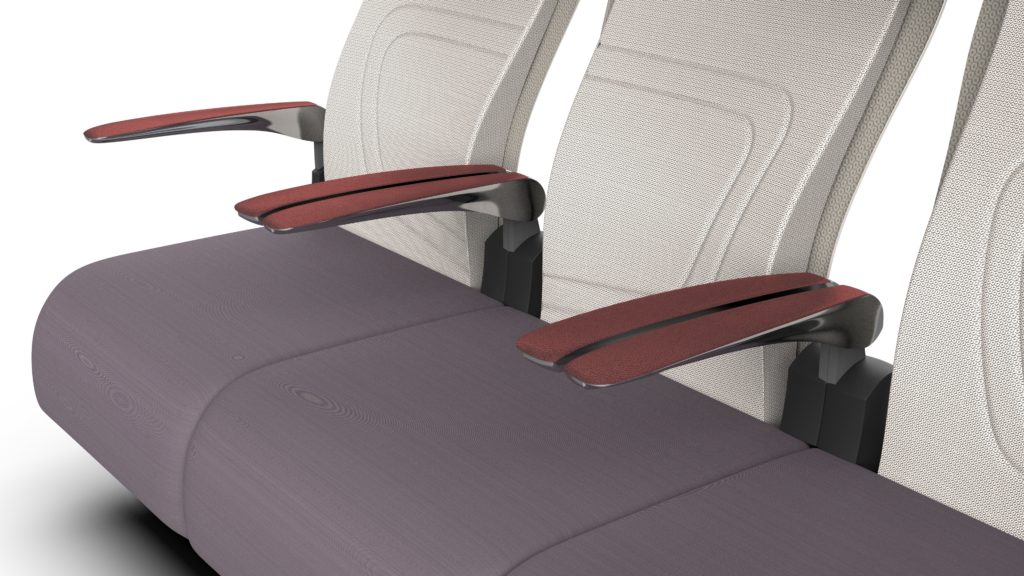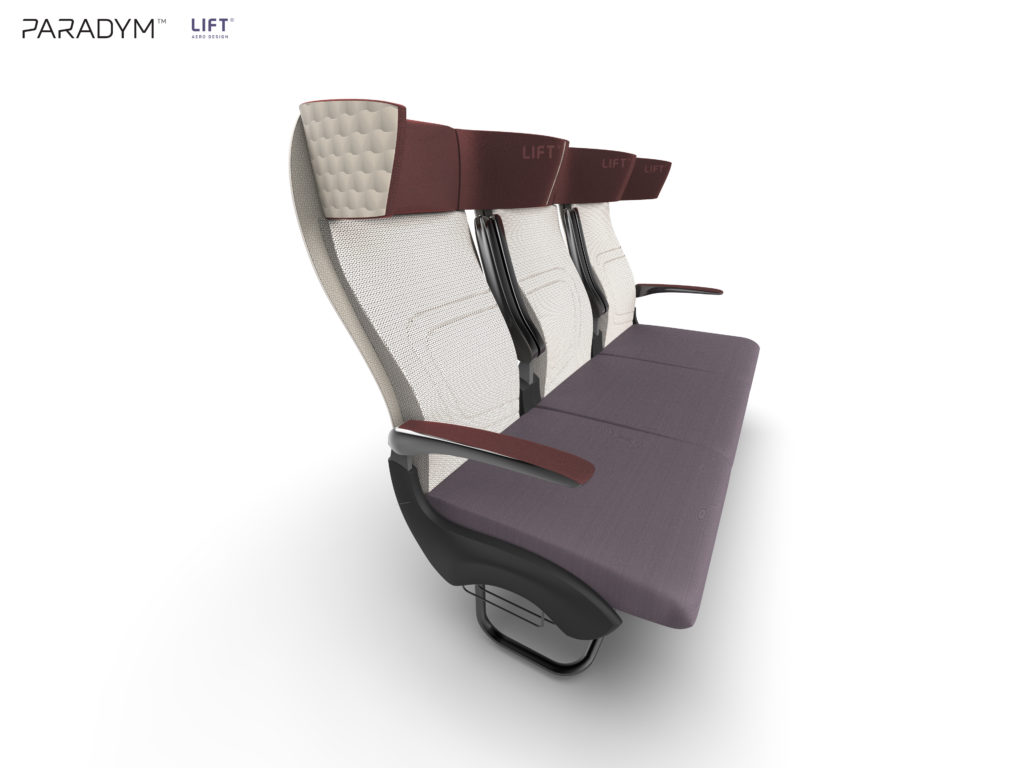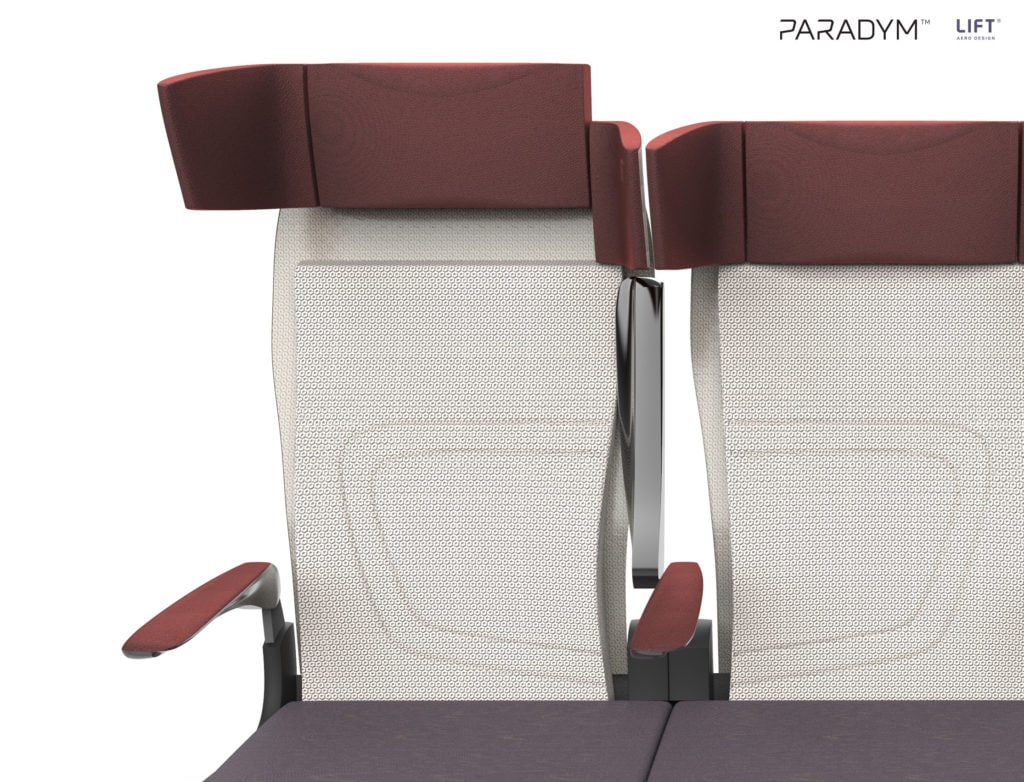[PHOTOS] LIFT’s Paradym Concept Provides Flexibility for Long-Haul Single-Aisle Aircraft
Share

LIFT Aero Design (LIFT) has come up with a new cabin seating concept for single-aisle jets of the future, which it envisions will have a wider fuselage than today’s Airbus A320 and Boeing 737 families of aircraft.
A concept from LIFT, dubbed Paradym, sees the entire cabin equipped with the same 3 x 3 configuration using a wide triple-seat setup. Each of the three seats feature 20 inches of width between armrests, an increase from the current average of 17 or 18 inches. For comparison, LIFT said the three seats would be nearly as wide as a row of four standard economy-class seats.

The company designed the three seats so that they can be quickly and easily modified to accommodate different levels of service, including economy and premium economy, as well as a lie-flat option. For example, with dual armrests at each seat, not only does every passenger have two dedicated surfaces, which creates an improved perception of hygiene, but a row can be transformed into a premium economy offering simply by blocking the middle seat and selling the aisle and window seats either side.
Furthermore, by raising the front of the seat bottom cushions, Paradym can be transformed into a five-foot, nine-inch flat surface to form the basis of an economy flat, premium economy flat or business light flat product, depending on the additional amenities offered by the carrier.
This element of the design echoes airlines’ move towards offering a cheaper lie-flat option than in traditional business class – think Air New Zealand’s Skynest or Lufthansa’s Sleeper’s Row – but with extra width that LIFT says makes Paradym suitable for a far higher percentage of travelers than three standard economy-class seats.

The design house believes this cabin configuration concept offers greater flexibility for airlines and lessors, as each triple-seat can be sold as a different product. In fact, LIFT is positioning Paradym as a win-win, with costs lowered due to less spare parts being needed, and revenue maximized as seating can be sold directly in line with demand. The company thinks this is a particularly promising prospect for low-cost and hybrid carriers.
The removal of dividers between traditional cabin classes could also pave the way for other enhancements to the aircraft cabin, such as larger overhead bins, more workspace and storage in galley areas and larger lavatories.
As well as looking at the bigger picture, LIFT has also focused on smaller, but no less important details. For example, Paradym’s curved bottom seat cushions would stop the seating from pressing into the back of passengers’ knees, and the tapering of the sides of each seat allow the arms to rest in a more natural position.

A wrap-around headrest with large cocoon-like wings not only offers enhanced comfort, it also presents a new opportunity for airlines to differentiate their branding.
Daniel Baron, managing director at LIFT, said, “In economy-class seat programs, the number of surfaces that can be customized is often limited to fabric or leather, a few plastic parts and seatbelt color, but with Paradym there are more options to customize the color, material and finish (CMF). The outer surfaces of the headrests could be plastic or a decorative laminate with a customized design or texture. The same goes for the vertical tapered portions of the seat that frame the cushion, and for the armrests. Clever use of textures can go a long way to communicate a brand or product’s soul and proposition.”
While the introduction of single-aisle aircraft with wider fuselages could still be years away, Baron believes that Paradym is also great option for airlines wanting to replace quads – rows of four economy-class seats – on wide-bodies including Boeing 777s and A330s.


